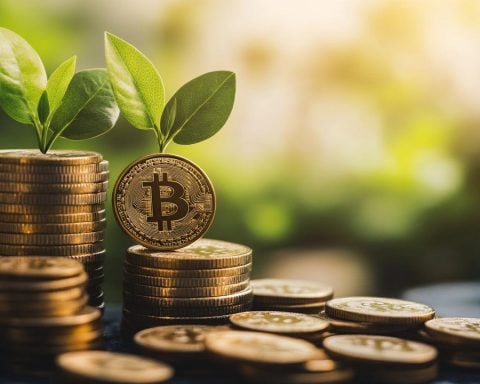In the fast-paced world of cryptocurrency, few stories have generated as much intrigue and discussion as the dramatic rise and fall of Terra Luna. Twitter, the social media giant, played a surprising role in this story, serving as both a battleground for debate and a platform for key announcements.
Terra Luna, a blockchain protocol that supported a suite of algorithmic stablecoins, caught the attention of the crypto community with its ambitious vision and innovative approach. Twitter, with its vast reach and vibrant crypto community, became a natural hub for sharing updates, insights, and predictions about Terra Luna. Influencers and developers frequently took to Twitter to discuss the project’s merits and potential pitfalls.
At the height of Terra Luna’s popularity, Twitter was abuzz with discussions about its price surges and innovative mechanisms, like the TerraUSD (UST) stablecoin and the LUNA token, which were designed to work in tandem to maintain stability and value. As with many crypto projects, the fervor was palpable, with tweets highlighting both glowing endorsements and skeptical critiques.
However, when Terra Luna encountered significant challenges that led to its decline, Twitter became the stage for real-time commentary and analysis. Key figures in the crypto space used the platform to dissect what went wrong and speculate on future developments.
This dynamic illustrates the broader relationship between social media and cryptocurrency markets, where platforms like Twitter can amplify both hype and scrutiny, ultimately shaping the destinies of digital assets like Terra Luna.
The Unseen Ripple: How Terra Luna’s Rise and Fall Affects Global Communities
The unfolding drama of Terra Luna was not just confined to market charts and social media buzz; it significantly impacted communities and economies worldwide. Its ascent and sudden decline resonated far beyond the crypto sphere, influencing broader societal patterns and raising complex questions about digital asset stability.
Impacts on Local Economies
Many early investors, particularly in developing regions, saw Terra Luna as a beacon of financial growth. This optimism had tangible effects; in some areas, newfound wealth was channelled into local businesses and housing, sparking short-lived economic booms. However, the sudden downturn left these communities grappling with economic precarity, highlighting the broader issue of financial literacy and the volatile nature of cryptocurrency investments.
Global Regulatory Conversations
Terra Luna’s tumult opened the door to crucial regulatory debates, pushing entities around the globe to reconsider how digital currencies should be regulated. Will national governments create stringent regulations to protect their citizens from volatile cryptocurrencies, or will they embrace innovation, risking financial instability? This conversation continues to shape policy-making worldwide.
Human Behavior and Technology
Terra Luna’s story also underscores how technological platforms like social media influence human behavior and decision-making. Is it wise for investors to rely on platforms such as Twitter for financial advice? The role of influencers and rapid information dissemination in perpetuating the cycle of hype cannot be ignored.
In conclusion, Terra Luna’s journey serves as a vivid reminder of the multifaceted influences of cryptocurrency. It not only challenges the economic frameworks but also compels societies to balance innovation with responsibility. For further insights, explore Coindesk for comprehensive crypto news.
















